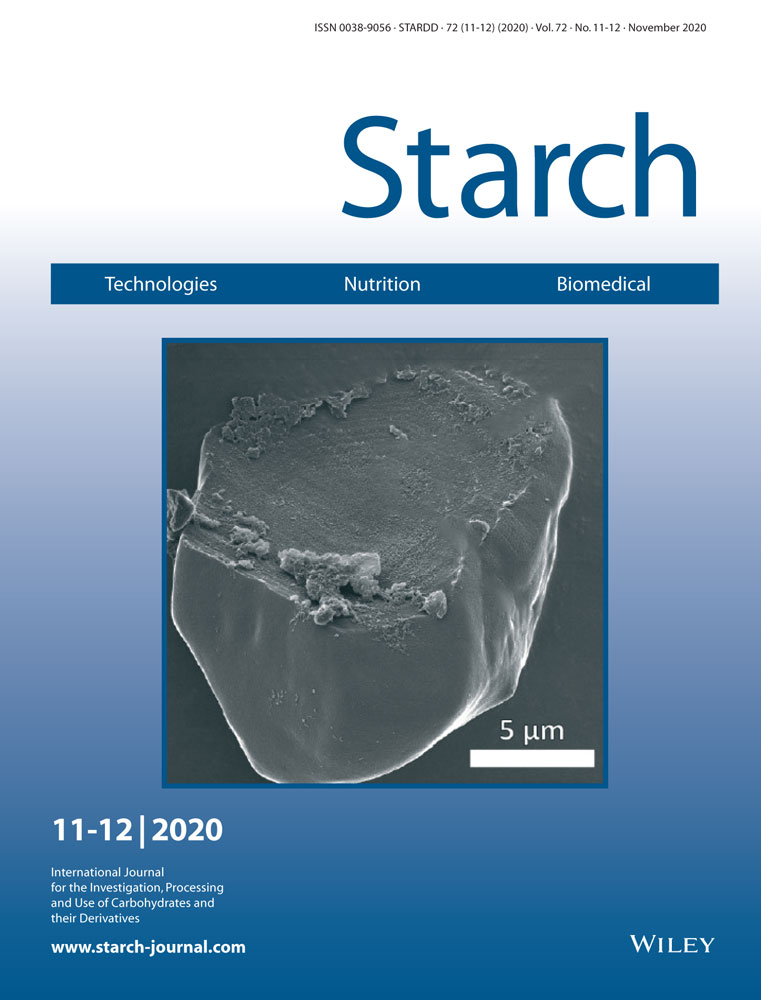Comparison of Isolation Methods and Physicochemical Characteristics of Starches Isolated from Red and White Sorghum Hybrids
Abstract
The aim of this study is to optimize starch isolation from different sorghum cultivars and characterize the starch from fourteen red and white sorghum hybrids. Methods involving sulfite maceration and/or protein hydrolysis are assayed. Recovery and yield, residual protein, total and starch damage, whiteness index (WI), water absorption, solubility, and swelling power of isolated starches are compared in order to select the appropriate isolation method. Results indicate that starch recoveries between 44–76%. Isolated starches present 0.58–2.4 g 100 g−1 residual proteins, 89.1–90.6 WI, 5.10–9.57 g 100 g−1 solubility, and 15.09–22.57 g water 100 g−1 swelling power. Taking into account recovery, residual protein, WI, and good hydration properties of starch, the maceration during 24 h combined with protein hydrolysis during 3 h is used to isolate starches. After starch isolation, its characterization (residual protein, total and damage starch, amylose content, particle size distribution, WI, crystallinity, gelatinization temperature, water absorption, solubility, and swelling power) is performed. Principal component analysis shows that color as indicator of variety is influenced by the structure, composition, and physicochemical properties of isolated starch. Starches from white sorghum hybrids have higher amylose content and gelatinization temperature than the red ones, which affect starch solubility, and swelling power.
Conflict of Interest
The authors declare no conflict of interest.




